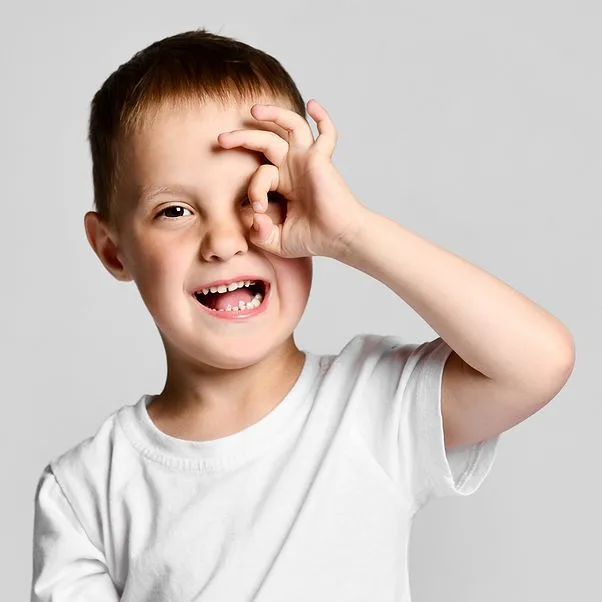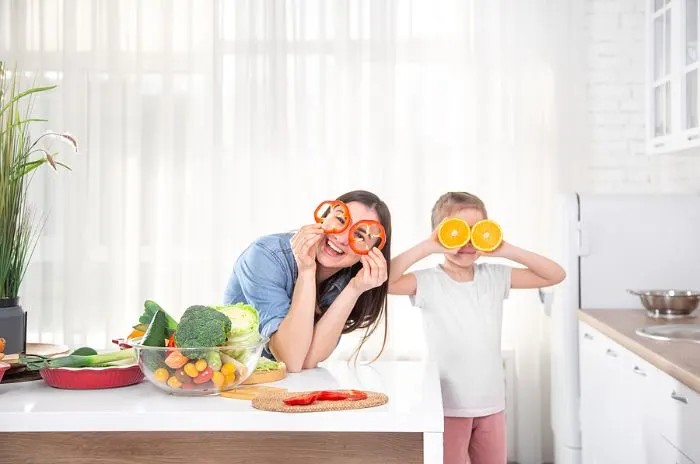Did you ever play the “I Spy with my Little Eye” game as a child? This game is a favourite in homes and preschool classrooms, for good reason.
It’s a great game to play to boost a child’s concentration, teach them to listen carefully and stimulate their thinking skills.
You can also use it to practise colours, shapes and even build sound awareness.
The best thing about the game is that it requires zero prep and can be played in 5 minutes, while preparing dinner or even while driving in the car (car games are great for learning).
Read past the intro to find 72 I Spy examples to get you started.

What does “I Spy” Mean?
The phrase “I spy” basically stands for, “I see.” The sentence opener, “I spy with my little eye,” is especially engaging for children because of the rhyme.
Where Did “I Spy with My Eye” Come From?
The earliest mention found of the I Spy game was from Victorian England and appeared in The Manchester Times of 1889. At that time, play may have typically focused on the first letter of the objects’ names. [source]
How Do You Play “I Spy with My Little Eye”?
What are the rules of I Spy? Indoors or outside, an adult often begins the game. As the person selecting an object, you are sometimes called “The Spy.”
You look around the area and focus on an object within view of the other players.
Once you have chosen your object, say, “I spy with my little eye…,” and then offer the first clue. Some “spies” make a circular “spyglass” or monocle with the fingers of one hand, for fun viewing, or with two hands to imitate binoculars.

For young children, you may want to look in the direction of the object as a partial clue. For older children, be careful not to look right towards the article.
Once an object is chosen and a clue given, it should not be changed until after it has been guessed.
Children guess according to the clues you have given. You answer “yes” or “no,” as to whether their guess is correct. When more than one child is playing, they take turns guessing.
If you want, you can also let players ask “yes” or “no” questions, like, “Is it here in the living room?” or “Is it on my left?”
In addition, if players are having difficulty finding the answer, The Spy can offer clues like “hot” and “cold,” as to how close the players are coming to the correct answer.
The player who guesses correctly is the next one to give clues as The Spy for a different object.

72 “I Spy with My Little Eye” Game Ideas
Here are some fun “I Spy with My Little Eye” examples and game ideas that incorporate various skills such as number recognition, sound awareness, shape identification, rhyming skills and more.
You can build on these examples if you’d like to play a game just focused on one skill such as sound awareness.
As a bonus, all these options can help your child practise listening skills.

I spy with my little eye…
Beginning Sound Awareness
- something that begins with “s”
- something that starts like “boo”
- something that begins with “t”
Ending Sound Awareness
- something that ends like “top”
- something that ends with “g”
- something with the same final sound as “sun”
Visual Perception
- something red, bright and shiny
- something straight, checked and flat
- something round, large and blue
Visual perception is an important skill for learning to read.
Capital Letter Identification Skills
Older children can play I Spy to learn to recognize consonants and vowels.
- a capital letter “H”
- the capital consonant “M”
- the capital vowel “E”
Lowercase Letter Identification Skills
- a lowercase letter “b”
- the lowercase consonant “f”
- the lowercase vowel “a”
Here are more letter recognition games and activities.
Number Identification Skills
- the number 5
- a number 9
- the number 10
Here are some fun number recognition skills to help you build this skill.
Colour Identification Skills
- something green
- something pink and brown
- something light purple
Shape Identification Skills
- something shaped like a rectangle
- something with circles and diamonds
- something triangular
Awareness of Signs of the Seasons
- something growing that shows our season is spring
- a tool that shows it is autumn
- a decoration that shows our season is winter
Memory
Provide at least 3 characteristics:
- something fuzzy, white and heavy
- something big, yellow and electric
- something wooden, tan and rectangular
Here are some memory games to play as well.

Animal Identification
- a brown goat
- a polar bear
- a baby deer or fawn
Spatial/Position Awareness
- something over/under the cabinet
- something in front of/behind the sofa
- something that is high/low
Plant Identification Skills
- a yellow tulip
- a dark pink rose
- a tall pine tree
Function Thinking Skills
- something round and metal that is used for cooking
- something flat and glass that we use to see how we look
- something black and plastic that we use to communicate
Sound Thinking Skills
- something that says “beep”
- something that makes a ringing noise
- something that gurgles
Fruit/Vegetable Identification
- a long, yellow vegetable
- a green, sweet fruit
- a round, orange fruit

Vocabulary
- something that looks “transparent”
- something with the colours “crimson and lavender”
- something that smells “fragrant”
Touch/Texture Grouping Skills
- something that feels bumpy
- something that is smooth
- something silky
Smell Grouping Skills
- something that smells stinky
- something that smells sweet
- something that smells minty
Word Identification
These “I Spy with My Little Eye” ideas are also suitable for older children, or children who already recognize words in their environment.
- the word “go”
- the word “exit”
- the word “stop”
Rhyming Skills
- something that rhymes with “guzzle”
- a thing that rhymes with “bright”
- something that rhymes with “near”
Measurement Skills
- something that is about a centimetre long
- something that is around a metre tall
- something that holds about a litre
Sorting
- the fruit in the dish that is different from the rest
- a button in the jar that is different
- the toy in the tray that is different from the rest
Taste Differentiation Skills
- a food that tastes salty
- something that would taste sour
- a food that tastes sweet
I hope you like these “I Spy with My Little Eye” examples.
Playing the part of The Spy may be quite challenging for children in the beginning. They are certainly learning in either role.
You can come up with your own categories to play the “I Spy my Little Eye” game with preschoolers, as well, depending on your children’s interests and your surroundings.
Are you a preschool teacher or working in Early Childhood Education? Would you like to receive regular emails with useful tips and play-based activity ideas to try with your children? Sign up for the newsletter!
Here’s an awesome list of categories for games and more classic games for kids.

Natalie
Wednesday 30th of June 2021
Great ideas! Thank you
Tanja Mcilroy
Thursday 1st of July 2021
You're welcome, Natalie! Enjoy